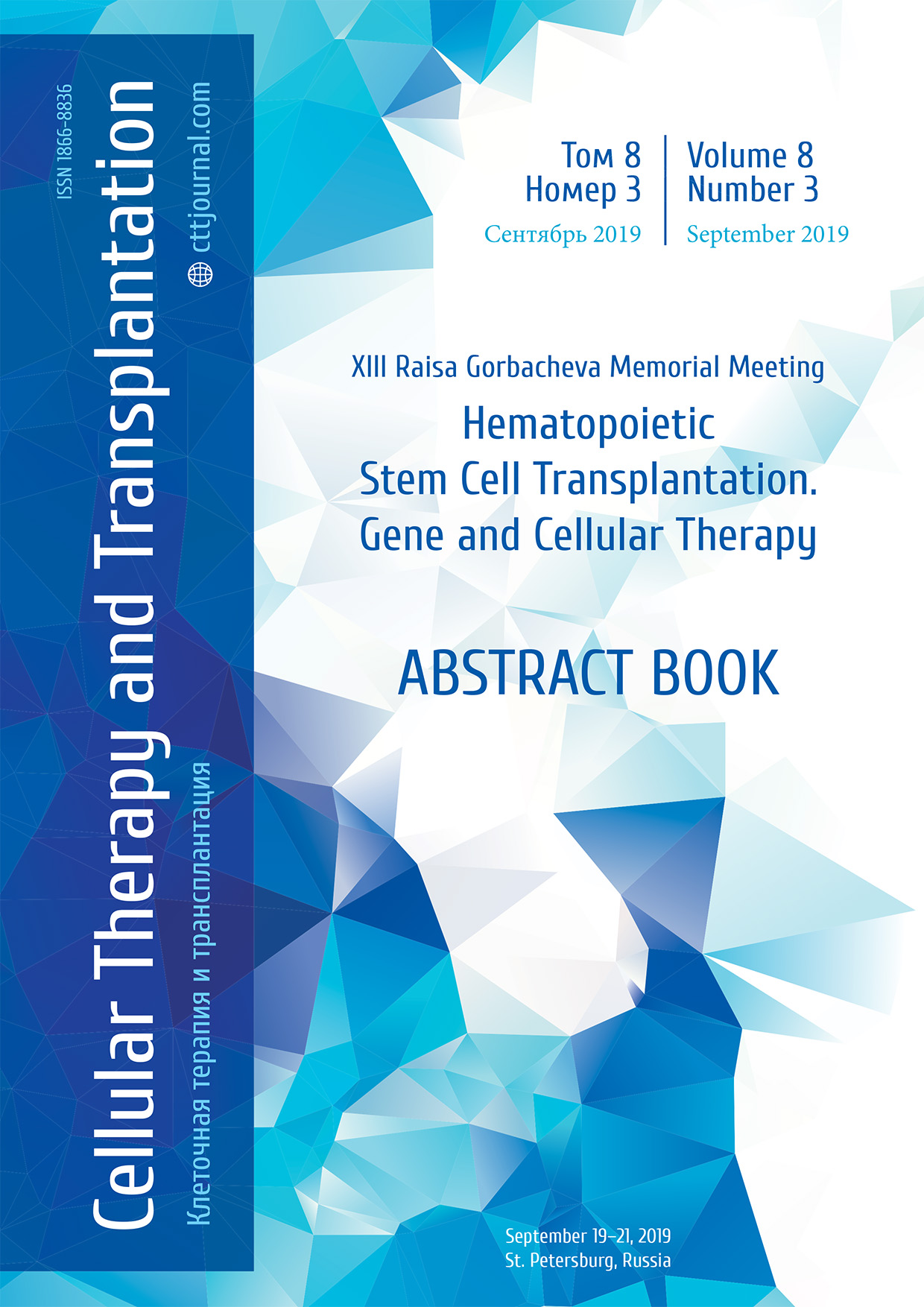Uniparental disomy found in tumor DNA of de novo diagnosed ALL patients as a factor predicting poor outcome
Natalya V. Risinskaya, Olga A. Gavrilina, Julia A. Chabaeva, Anna A. Yushkova, Andrey B. Sudarikov, Sergei M. Kulikov, Elena N. Parovichnikova, Valery G. Savchenko
National Research Center for Hematology, Moscow, Russia
Contact: Dr. Natalya V. Risinskaya
E-mail: risinska@gmail.com
Summary
Uniparental disomy (UPD) or copy neutral Loss of Heterozygosity (cnLOH) was described for many malignancies including acute lymphoblastic leukemia (ALL). UPD leads to homozygous form of the chromosomes or their regions including those probably containing tumor-associated mutations. Unfortunately, standard cytogenetic analysis does not detect UPD. However, a sign of uniparental disomy is the loss of heterozygosity for genetic markers in combination with normal copy number of chromosome. Our objective was to identify UPD in blast cells of patients with de novo ALL using cytogenetic analysis with STR profiling and to analyze the outcome of therapy for this group of patients relative to patients without LOH. If UPD for patients with de novo ALL proves to be an unfavorable prognosis factor, those patients should be considered as high-risk group and first-line candidates for bone marrow transplantation.
Patients and methods
This study included a comparative analysis of the STR DNA profiles of the tumor and normal cells from bone marrow samples in a cohort of 32 patients with de novo diagnosed Ph-negative ALL undergoing treatment according to the “RALL-2016” regimen at the National Research Center for Hematology (Moscow, Russia). Inclusion criteria were as follows: de novo diagnosed Ph-negative acute lymphoblastic leukemia (ALL) patients, 18-55 years old, intermediate risk group without MLL translocation t(4;11)(q21;q23), treatment by RALL-2016 protocol. Exclusion criteria: other diagnosis, adult patients older than 55 years, MLL translocation t(4;11)(q21;q23), pretreatment or treatment by other protocol. The presence of blast cells in bone marrow samples was confirmed morphologically. The tumor karyotype was established by standard cytogenetic analysis. Control DNA samples were taken from blood of patients in complete remission and/or from buccal epithelium. STR-profiles were assessed by PCR with COrDIS Plus multiplex kit for amplification of 19 polymorphic STR markers and amelogenin loci (Gordiz Ltd, Russia). The fragment analysis was performed on ABI3130 Genetic Analyzer. The data processing was accomplished using GeneMapper v.4-0 software. SAS V9/4 was used for statistical analysis of the data. A multivariate survival analysis was used to assess independent impact of the UPD as a risk factor for this cohort of patients. We have chosen Failure Free Survival (FFS) as primary endpoint. Death from any reasons, relapse and second leukemia were chosen as failure events, survival time interval starts from begin of treatment.
Results
Of the 32 patients, six were found with LOH in the certain STR loci (19%). Of these six, two were resistant to therapy and died from disease progression. One patient with LOH is currently in relapse, and one patient with multiple LOH has developed secondary leukemia (Fig. 1a). Only two from six patients are “Failure-Free” now, whereas only three patients from 26 died in group without LOH (two from infectious complications and one from GvHD after BMT). P value <0.05 (Fig. 1b).

Figure 1. Patient’s summary (A) and failure-free survival (FFS) estimates (B)
Conclusions
We have found statistically significant association of clinical failures with the LOH in STR loci measured at the onset of ALL. For all six patients from the “risk group”, LOH in some STR markers was not associated with deletions or monosomy detected by standard cytogenetic analysis. For one patient, UPD was verified by chromosomal microarray (CMA) technique, as shown in Fig. 2. We assume that UPD is an unfavorable prognostic factor for de novo diagnosed ALL patients and could be used for risk stratification and choice of adequate therapy implying allogeneic hematopoietic stem cell transplantation, or modern innovative therapy approaches.

Figure 2. Patient #32 karyotype by CMA. Uniparental disomy of chromosome 3 (pink bar) explains the loss of heterozygosity in the 3p21.3 STR-locus, and deletions or duplications in some chromosomes
Losses (red bars) and gains (blue bars) in a number of chromosomes coincide with the data of cytogenetic analysis. (51,XX,del(1)(p31),+1,del(4)(q28),+5,+8,der(9),del(13)(q14q22),+13,der(15),del(17)(q23),+21[15]/46,XX[15]).
Keywords
Acute lymphoblastic leukemia (ALL), uniparental disomy (UPD), loss of heterozygosity (LOH).


